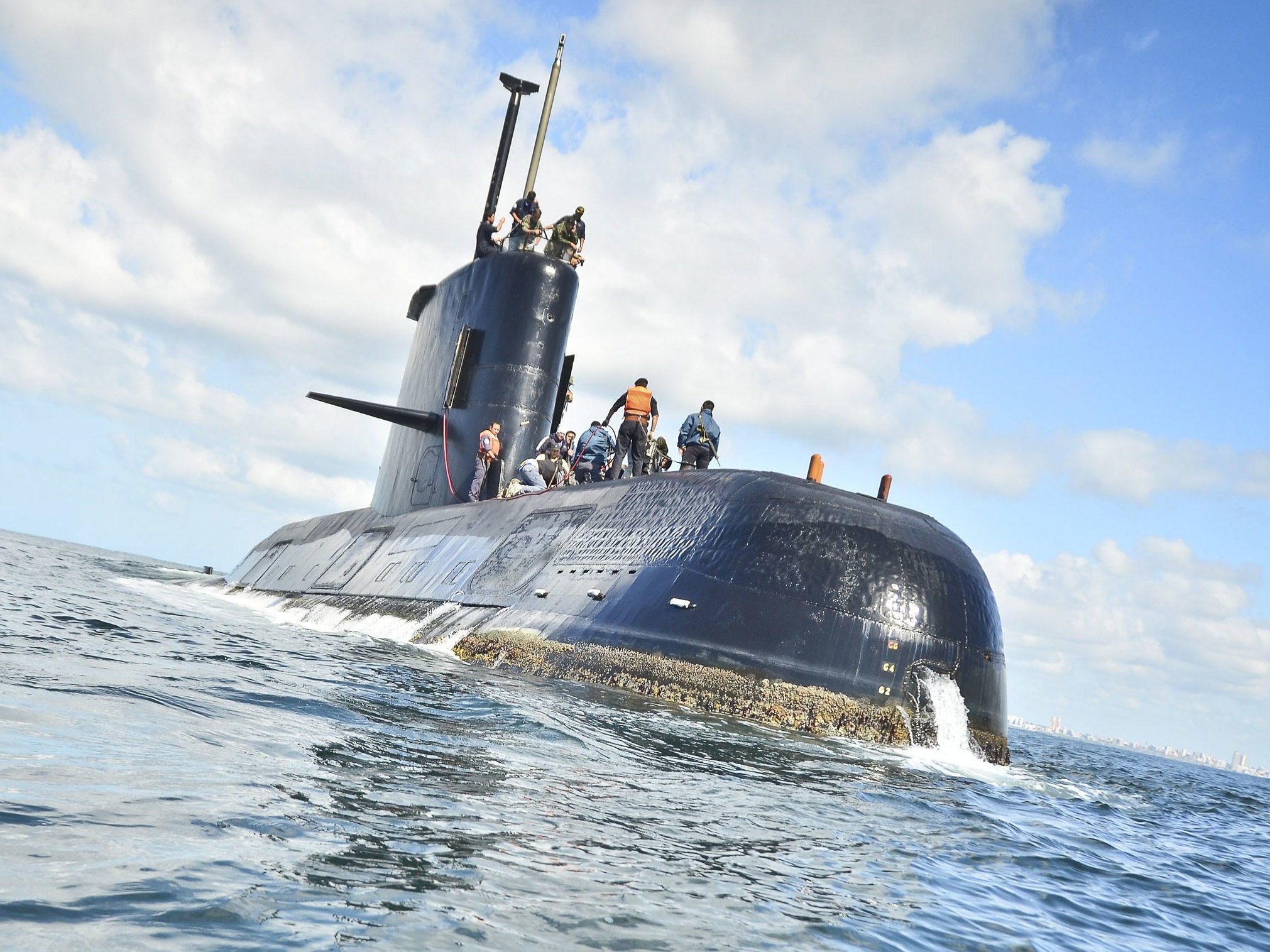ARA San Juan: Argentina submarine hunt intensifies after noise offers clue to location as oxygen runs out
Search enters 'critical phase' as 'hydro-acoustic anomaly' detected

Search and rescue teams hunting for a missing Argentinian submarine will return to a previously searched area after officials said a noise made in the South Atlantic a week ago could offer a clue to the vessel's location.
Dozens of planes and ships were searching for the ARA San Juan, with the search entering a "critical phase" as the 44 crew on board could be running low on oxygen, an Argentine navy spokesman said.
Captain Enrique Balbi later said an unusual noise was detected near where the submarine reported its last position, but he declined to say if the sound indicated an explosion or emergency on the vessel.
The "hydro-acoustic anomaly" originated around 30 miles north of the submarine's last registered position, he said, adding: "It's a noise. We don't want to speculate" what caused it.
The San Juan went missing as it was sailing from the extreme southern port of Ushuaia to the city of Mar del Plata, about 250 miles (400 kilometres) southeast of Buenos Aires.
The Argentine navy and outside experts worry oxygen for the crew would last only seven to 10 days if the sub was intact but submerged. Authorities do not know if the sub rose to the surface to replenish its oxygen supply and charge batteries, which would affect the calculation.
The German-built diesel-electric TR-1700 class submarine was scheduled to arrive on Monday at the naval base in Mar del Plata, where city residents have been dropping by with messages of support for relatives of the crew.
Around 30 boats and planes and 4,000 people from Argentina, the United States, Britain, Chile and Brazil have joined the search for the submarine.
Search teams are combing an area of some 185,000 square miles (480,000 square kilometres), which is roughly the size of Spain.
Hopes were lifted after brief satellite calls were received and when sounds were detected deep in the South Atlantic. But experts later determined that neither was from the missing sub. A US Navy aircraft later spotted flares and a life raft was found in the search area, but authorities said neither came from the missing submarine.
The navy has said the submarine reported a battery failure before it went missing. Authorities have no specific details of the problem.
Additional reporting by agencies
Join our commenting forum
Join thought-provoking conversations, follow other Independent readers and see their replies
Comments